Background
Most flat rental agreements in Tokyo are limited to 2 years, and can then be renewed. Renewal is mostly uncomplicated, the tenant just signs again a paper. There is a catch though: in most cases, an estate broker was doing the initial flat search, and at contract renewal they receive again money from the renter: a monthly rent. I was living in this flat for almost 6 years, renewal came up - so thinking of this extra expense made me look for a new flat.
My first flat searches in Tokyo were directly via internet sites like Sumo. Eventually, I ended up with a company specialized in renting to foreigners. Their biggest advantage: no guarantor required. When renting, one has to put down a sum of usually 2 month’s rent, which would be used to restore the flat if you move out without properly canceling the contract. On top of that, most contracts also require a guarantor: someone who can jump in if that sum is not enough. For young Japanese moving to the big cities, parents sign up a guarantor. In some cases, a different company can take the role of the guarantor, charging the amount of an extra month’s rent.
For my second flat, I used a real estate broker, and then did 2 renewals, each one for a month’s rent. Various things made me look for something different: the family owning the flat did live in a house directly in front. Starting in spring, they took their house down and had it rebuilt - all along with noise which forced me to work from the office almost every day. The fact that we tenants paid for their house, and were not offered a temporary reduction of our rent, did not make the experience better..
So I was in the market again.
My Search Criteria
I considered moving thousands of km away to Kyushu, but eventually settled with ‘Tokyo, again’ for these reasons:
- Ability to commute to the office. Contact with colleagues is good, the food around Ebisu is great.
- Commuting by bike is also refreshing - so far my commute by either bike or train took 25 minutes.
- Infrastructure: so many nice places in Tokyo I like to revisit, also hard off stores, big electronic supermarkets, Akihabara. Meetups with Germany/Japan communities, Tokyo Linux user group, a few friends, and sometimes friends from Germany coming over
- Airport within range
This time, I was working with the Urban Renaissance Agency (独立行政法人都市再生機構, aka “UR”). It’s a government-affiliated company with a good reputation, giving me the feeling that at least I’m not paying for someone’s new house, but paying for society. UR prices are usually cheaper than normal or normal, but they have some great features:
- no key money (礼金), literally “thank you money”. This goes to the landlord or the real estate broker, and the tenant does not get it back
- no renewal fee (更新料), to be paid at renwal, every 2 years
- no guarantor required. For my second flat, I asked a colleague to jump in, and not having to ask someone this time is a real relief. So I’m not owing someone to do this. Many Western companies like Google also take this for their employees, but not my employer.
The actual search
Besides the actual criteria, I was quite free about the location of the new flat so pulled up the map from UR, and looked at their free estate. Based on this I was looking at flats with 1 or 2 rooms, which ideally would allow me again to commute by bike to work. On Saturdays, I cycled to objects marked free. All of these were parts of bigger housing complexes (danchi/団地), and as the management office was open I asked for a key and could have a look. I looked at 5 flats. 3 were really nice, but when I contacted the office to grab the flat it was already taken - so these flats are really popular.
I ended up with this:
- A 2-room flat, 46qm. One room Western style with wooden flooring, and one room Japanese style with tatami mats (和室)
- 7th floor in a 13-floor building
- Commuting to the company by bike in ~45min (instead of the 25min from old flat)
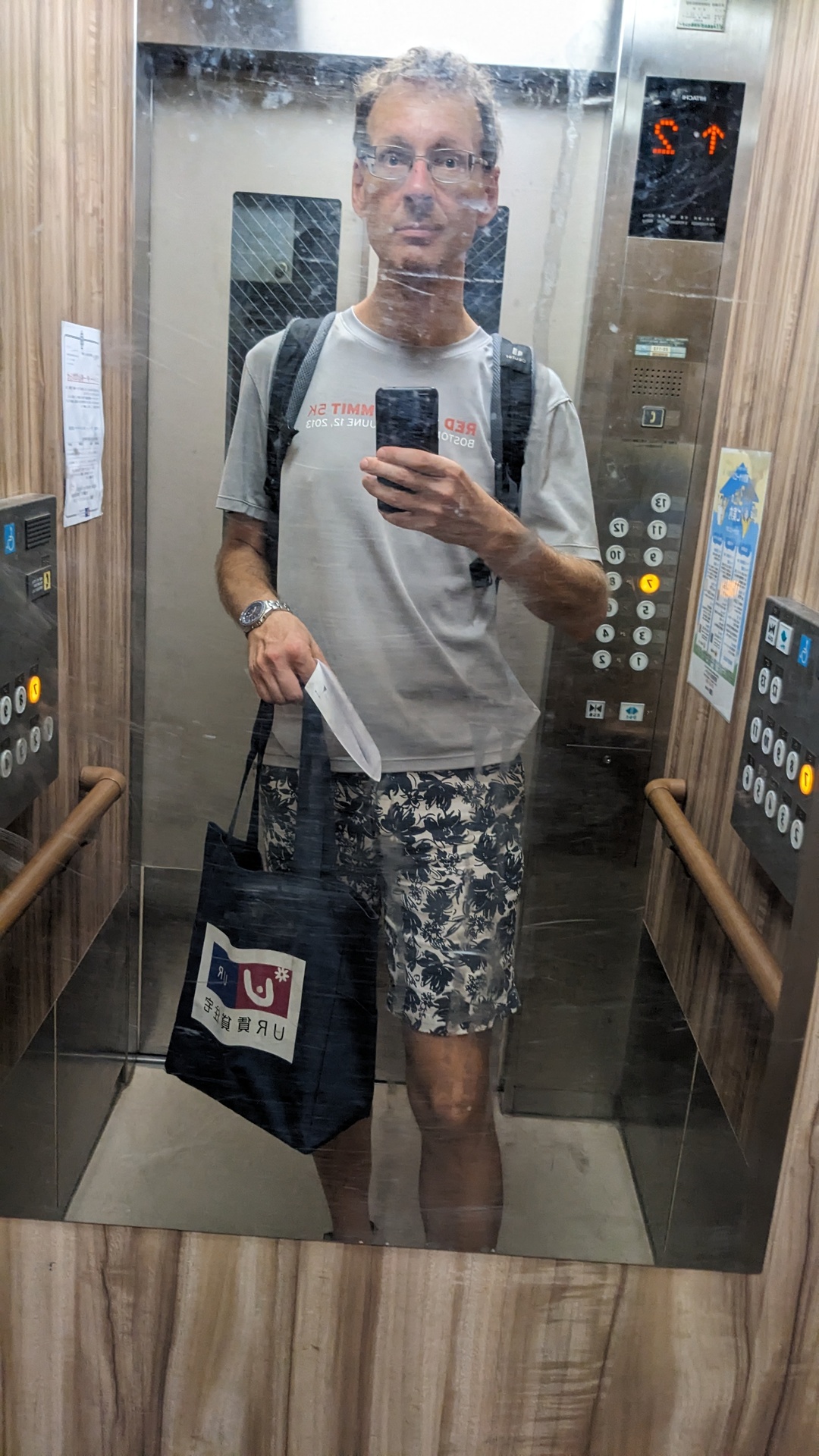


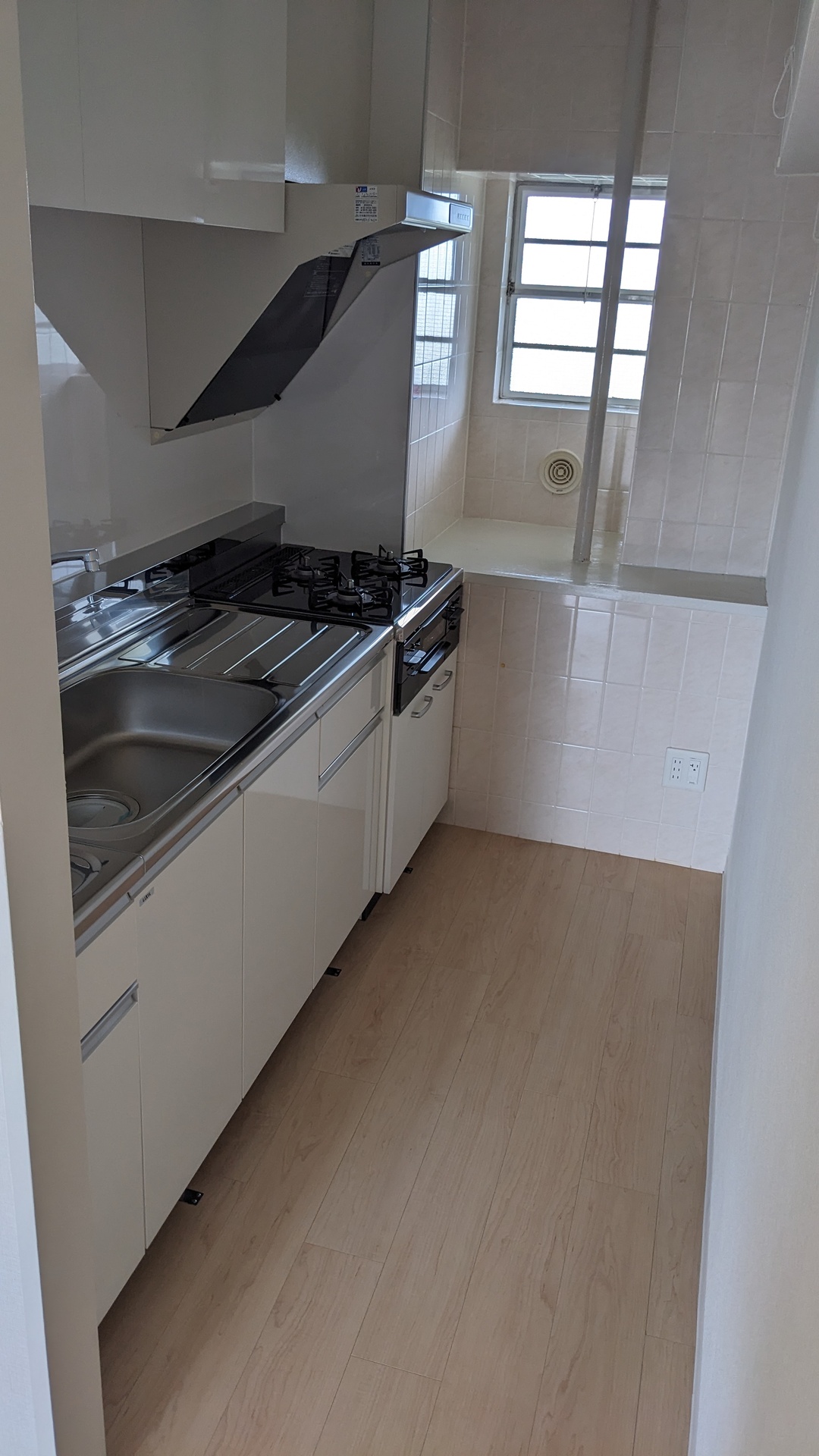


The paperwork
Until the finished contract, some office visits were required. First visit to a small office, to get the flat reserved. I had chosen that one as it was next to me, but for the contract work I needed to go to the bigger Shibuya office.
With an appointment I went to the Shibuya office. In 1 hour I got various explanations, quite interesting. The building I’m living in is ~50 years old. I was informed that an investigation had not found any asbestos in the walls. In case of earthquakes, the building might need repairs. There are also floods and typhoons, so a hazard map and instructions were also handed out.
In the flat, when using up resources to a certain level, I have to pay - above the level the renting company is paying.
Usually, the contract is then prepared, the tenant gets a paper with bank details, goes to the bank and returns with a certification paper that the money has been transferred. On that basis, the tenant completes the contract - in signing with his hanko/stamp. This bank transfer did not work in my case. I use Shinsei Bank, not offering transfers at the counter. So I fetched the money from the ATM, divided by multiple days as it was extending my daily limit. I had to pay:
- The security deposit (敷金), a sum of 2 month rents: 21.0400円 (1337€). This money is used to restore the flat in case I move out leaving a mess. To the least, after moving out cleaning of the flat will be paid from that.
- Rent: my monthly rent is 105200円. As I did not receive the keys on the 1st, I had to pay rent only for the remaining days of the month.
Together 29.6560円 (1885€). After paying this sum, I got the contract and a paper which entitled me to receive the keys to the flat.
For comparison: the old flat with 27qm I had 10.0000円 monthly rent. I had to provide a guarantor, had to do an extra insurance (20100円 for 2 years). Renewal all 2 years did cost an extra sum worth a month’s rent. All in all, I was putting down 48.2740円 (3068€) initially for the old flat.
The Utilities
I had contracts running for the various resources, had to order them newly now:
- Electricity: I ordered power for the new flat without issues, and after moving called them by phone to stop power. One downside: I had a water-powered energy plan in the old flat. That’s no longer offered, and could not be taken over to the new flat. Basic start/stop of power works per internet, but also me calling them could not get the power plan to sustain.
- Gas: I just use this for showering. Ordering for new flat via internet was no issue, but one has to be in the flat for setting it up with a technician, so also to agree on day/date. To stop supply in the old flat I called them.
- Water: I also started this via Internet, and called via phone to stop supply for the old flat.
- Internet: I had 1GBit fiber up into my flat for the old room, and initiated via internet to get that to the new flat. Nice surprise when they called me: “You pay now ~4500円 (28€) for 1GBit, how about 10Gbit for ~6500円 (41€)?”. I was about to agree, but then heard that it would need 3 weeks to set up while an appointment for setting up 1GBit in the room was possible in 1 week. Although, I just have laptops, Steam Deck and low-power devices around - nothing with >1GBit connectivity. 10GBit network card in the PCI slot of the RISC-V board would have been possible.. but more for hack value than really useful.
My new flat still had no fiber in the room, I was charged 1.6000円 (101€) for having the fiber pulled through the house into the room. The next tenant will not have to pay that as the fiber is now here - I had that situation in my old flat. Of course, workers entering the flat take off their shoes, wear a mask. When they have a small ladder, the ladder legs are prepared to not leave scratches.
I had ordered power/gas/water with overlapping time spans in both flats, just Internet was switched over without overlap - then it was time to move my belongings.
Physically Moving Over
I realize that since 2001, when I moved to Munich, I have spent
most of my life in small rented rooms, knowing I would move out
eventually.
My goal is to eventually live again in something I own - but
I’m not yet sure whether that will be in Germany or Japan.
With that in mind, I try to keep my belongings in Japan to the
minimum, for example, I have no refrigerator. My table (from
Ikea) can be dismounted, then there is a chair. I sleep not on
a solid and heavy bed, but Japanese style on futon, comparable
to a mattress. Easy to stow away over day, and to transport.
Just the washing machine made this a bigger topic: it would
require transport by a bigger car. 6 years ago, I had bought
a used machine, and considered now to buy a new one - which
can include services to dispose of the old machine. The issue:
these companies expect to fetch the old machine from the same
place as where they deliver the new machine.
Eventually, I looked up ‘引っ越し’ (“moving flat”) on the internet, and saw a small company. I did send 4 pictures of my belongings (desk/bed/washing machine) and got a cost estimate of 1.3000円 (82€), and was very happy with that. In 2 hours, we drove the pieces to the new flat, including washing machine.
Fun fact: the moving company had rented the car at a company called 赤帽, translated ‘red hat’, which matches the name of my employer.
Registrations
At the post office, I filled out a paper for having letters etc. forwarded to my new address the next time. My utilities like power/gas/water/internet were already aware of the new address as they supply me directly.
At the town hall I had to announce my move - as I moved inside the same ward (Tokyo center is divided into 23 of these), this required only visiting one town hall. I also have a ‘my number card’, a card with a certificate with which I can prove my identity for some services. At the town hall, also my address stored on the card got changed.
Further places to announce the new address, all done via Internet: bank, credit card company, mobile provider.
Setting up the new flat
For now, I mostly live out of the boxes I used for transport. The lockers in the flat have shelves made from wood with small splinters, so I put plastic onto these and put my belongings on top.
Regarding the tatami mats: I sleep on top of these now, and will see how it goes. That room has a special smell due to the mats. I will also have to do something about cleaning: the mats can not be wiped with cloth and water, I might have to get a vacuum cleaner for this - or there is a method to lift these up, put them outside and clean them.
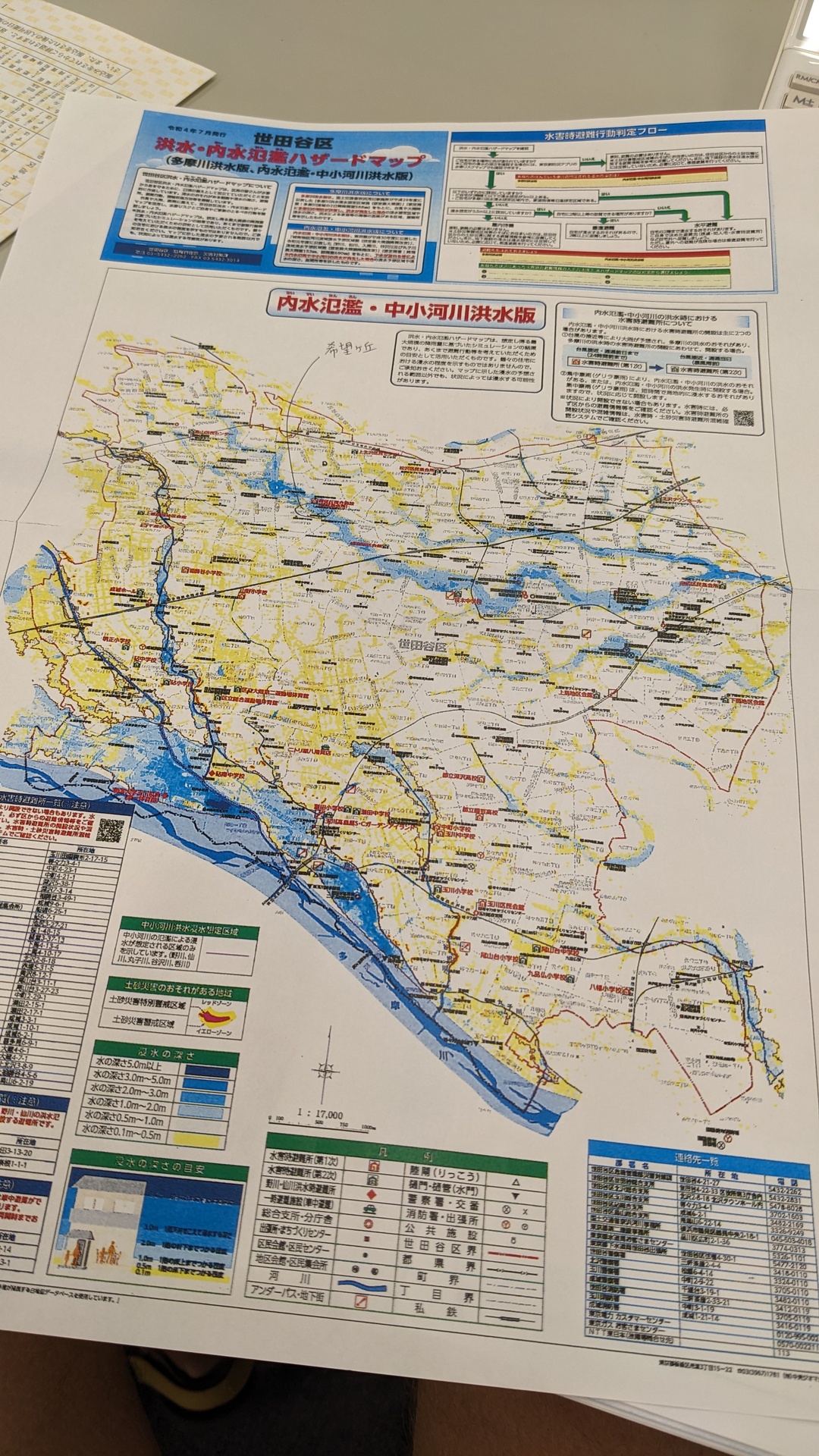
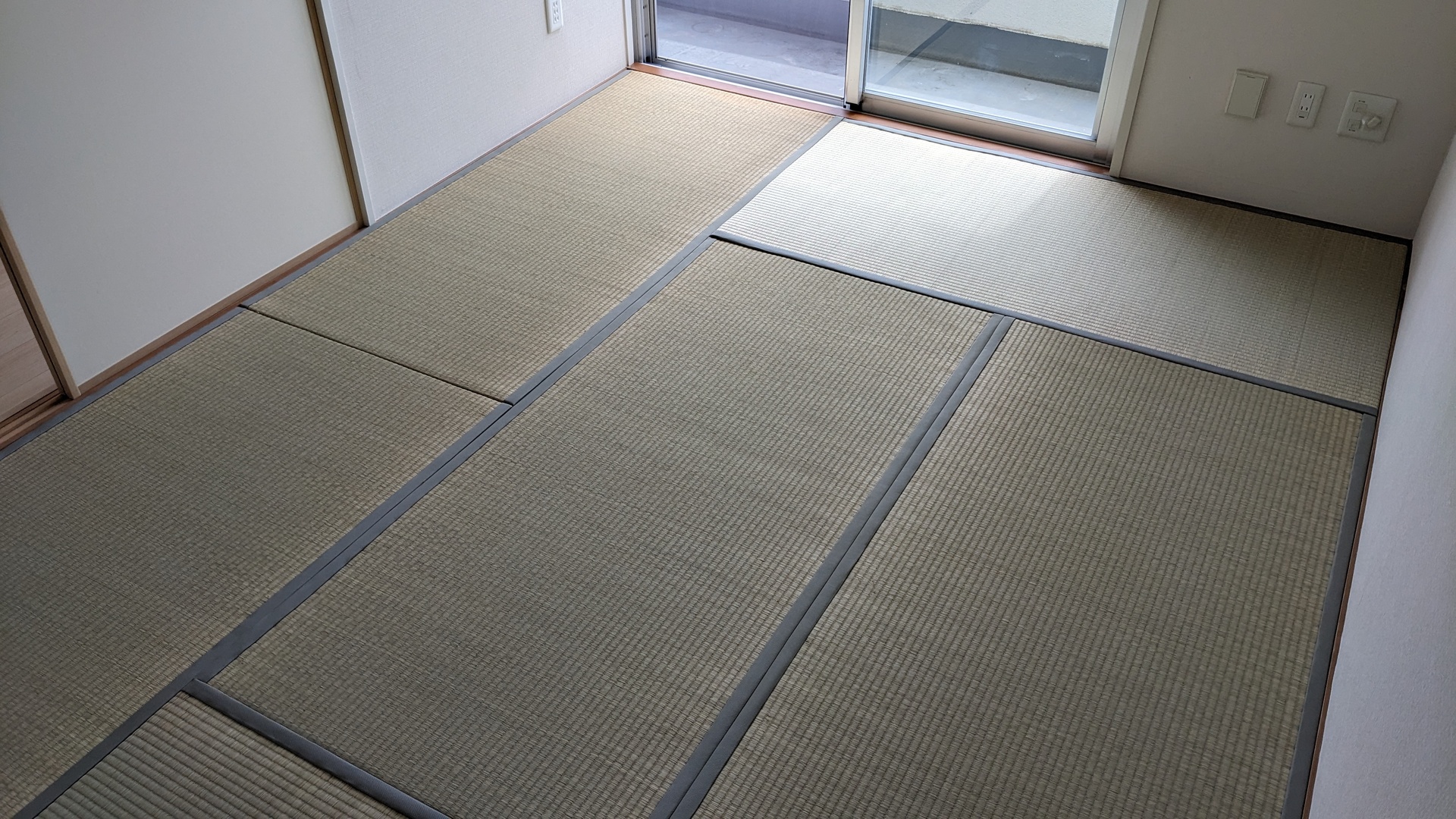



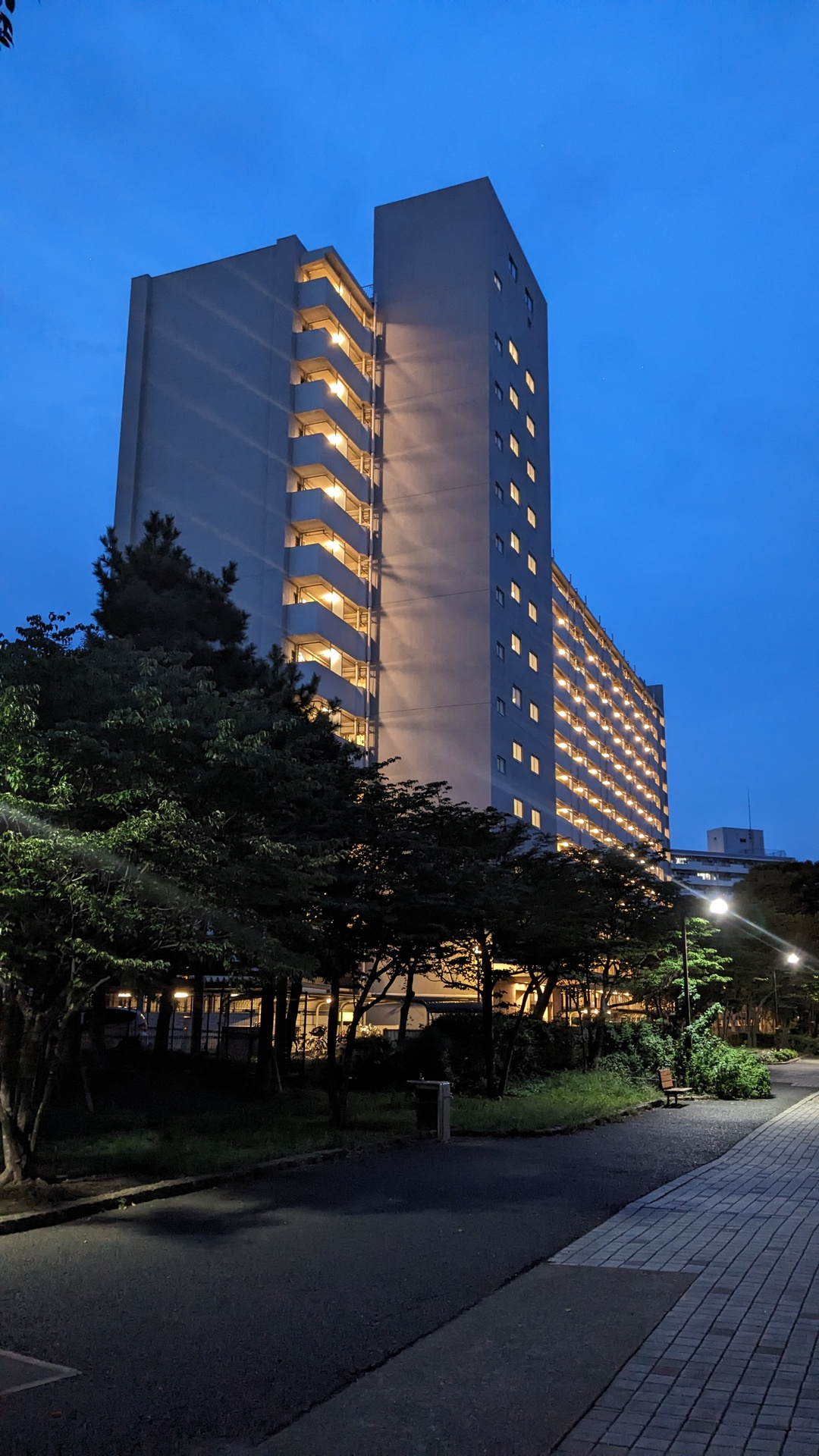
Flat specialties
The entrance area: one is expected to take off shoes here and never enter the actual flat with streetwear. House shoes can be used in the normal rooms, but not on top of the tatami mattresses. Following tradition tightly, one would also store extra slippers in the toilet, dedicated to be used there.
The bath has also some specialties over European baths. For Japanese traditional style washing, one would use a flat stool (i.e. 20cm height), and sit down there for washing. I’m showering while staying in the room. The bathtub features a solid cover: these are meant to keep water warm. Traditionally, Japanese use the bathtub often. The family would then first wash in front of the tube, then use the tube for a while, and keep the water in for the next family member. The cover is meant to keep the water warm.


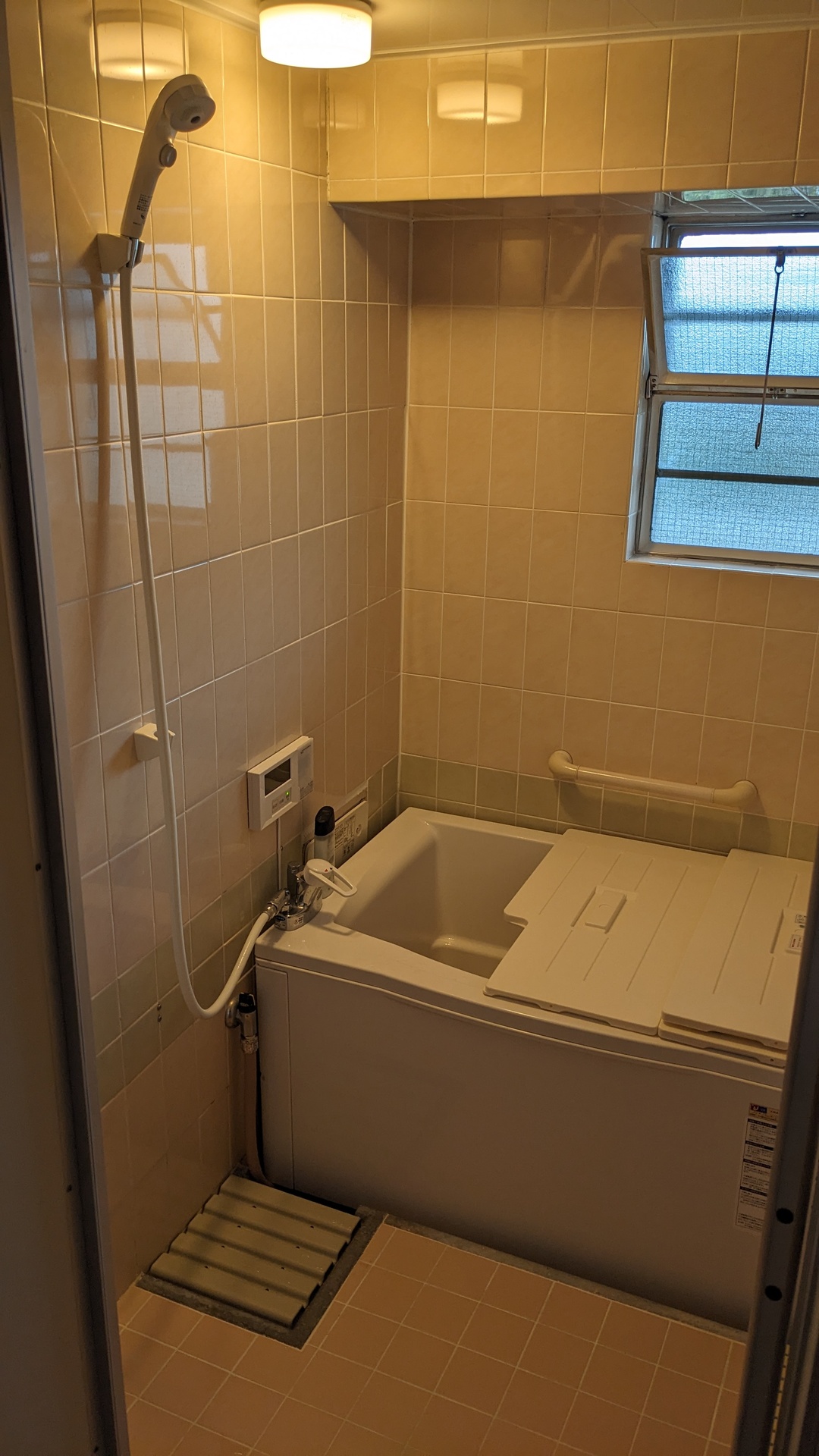


The walls: they are meant to be returned as they are handed over. Stores in Japan have all kinds of hooks that have a cover of use adhesive and can be attached to the wall (hoping they are solid enough to stay, but can later be removed without traces). Other hooks have one or more needles in the back, trying to attach to the wall.
Bike handling is really great here: in the past, I had my bike in front of the house, with a bike cover on top to protect from rain. Here, it’s commonly accepted to take the bike with the elevator up to the floor where your room is, and store the bike then in a room. So it’s protected from rain, and a good place to do repairs.
Power outlets are also special: they do not have an easy to use pin for ‘ground’. Normal outlets have just 2 stripes of metal, 110V AC. One of the 2 is a bit longer and has a an additional function, but for example for wasching machines where shortcuts can be really bad, you want a real ground. For this, an additional small piece is provided: you open the lid, there is a screw, and then you screw the ground cable..
What’s left: organizing payments of the monthly rent. UR is offering to conveniently pull this from your bank account - if you have a compatible bank, which I have not. Banks in Japan are not as compatible with each other as they are in Europe. I have friends who solved this situation by opening a new bank account. Together with maybe an employer who can not pay you on your existing bank account, you quickly end up juggling around money between multiple accounts. For now, it seems like I can get away with monthly transfering the rent from my bank account to UR.
